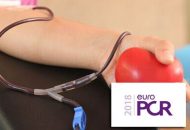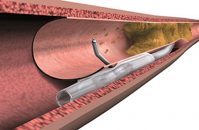Courtesy of Dr. Carlos Fava. One of the characteristics of chronic total occlusion (CTO) is the use of two access routes: femoral and radial. The radial approach is safer, but it has not been thoroughly analyzed in this type of PCI. The study looked at 3709 patients undergoing left main percutaneous coronary intervention (PCI) for…
Less Bivalirudin and Minimal Use of Ultrasound for Puncture Is the Worldwide Trend in Transradial Access
A worldwide survey shows there is much room for improvement as regards transradial access procedures, particularly for the prevention of radial artery occlusion post-procedure. While in many places this has been a standard technique for some time now, other places are yet to evolve, and that is the result of this survey. In the past…
A Simple Trick to Improve Our Transradial Punctures
Transradial access is here to stay; that much has been clear for some time now. However, some operators still resist change and the systematic use of this technique shows great geographical dispersion. Some of its limitations are a difficulty to obtain access and the somewhat frequent occurrence of radial artery occlusion after the procedure. This…
ESC 2018 | MATRIX: 1-Year Superiority of Transradial Access
Transradial access should be the access of choice in patients with acute coronary syndrome, while bivalirudin has not shown any benefit for this population. The long-term follow-up from the MATRIX (Minimizing Adverse Hemorrhagic Events by Transradial Access Site and Systemic Implementation of Angiox) trial confirms the results at 30 days: transradial access is here to stay…
Manual vs. Mechanical Compression after Transradial Catheterization
For patients undergoing transradial catheterization, whether puncture site compression is manual or mechanical has no significant difference as regards post procedural radial artery occlusion (RAO) rate. Hemostasis is shorter with manual compression, but it seems difficult to implement in the clinical practice. We could carry out an economical sub-analyzis of this study to find out…
EuroPCR 2018 | LeDRA: Left Distal Radial Approach for angiography and angioplasty
The left distal radial artery has been recently proposed as an alternative in selected patients with high success rate and low complications rate. This study evaluated the feasibility and safety of this puncture both for coronary angiography and angioplasty. It included 200 consecutive patients with palpable left distal radial artery punctured by three expert operators.…
Arterial Access After Thrombolysis
In the subgroup of patients with ST-segment elevation myocardial infarction who fail thrombolysis, transradial access reduces both bleeding and mortality, according to the results of this new study recently published in JACC Cardiovascular Interventions. Overall, transradial access following failed thrombolysis was associated with a 70% reduction in vascular complications, a 28% reduction in combined in-hospital…
The transradial approach reduces the risk of kidney injury in acute patients
It remains unclear whether transradial access, compared with transfemoral access, presents a different risk of post-procedural kidney injury for patients admitted with acute coronary syndrome. Historically, it has been considered (without any evidence) that, given the higher difficulty associated with transradial access, it would require longer fluoroscopy time and higher contrast volume, which would eventually…
Transradial access shows no benefit of bivalirudin
The aim of this study was to compare bivalirudin against heparin in patients with ST elevation acute myocardial infarction undergoing transradial primary PCI. Both bivalirudin and the transradial access are strategies aimed at reducing bleeding complications in patients undergoing acute MI. However, the benefit of their combined use is not year clear. Even though…
Successful angioplasty in elderly patients with chronic total occlusion reduces mortality
Courtesy of Dr. Carlos Fava. Nowadays, the number of coronary angioplasties carried out on patients with chronic total occlusion (CTO) is increasing due to many studies showing that it improves ventricular function, reduces symptoms, and improves survival. However, most of these works do not include patients of over 75 years old due to their frailty and…








